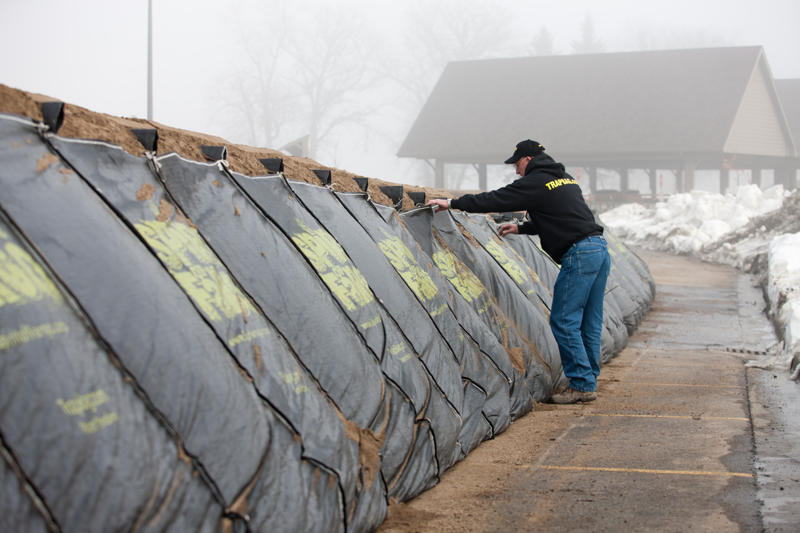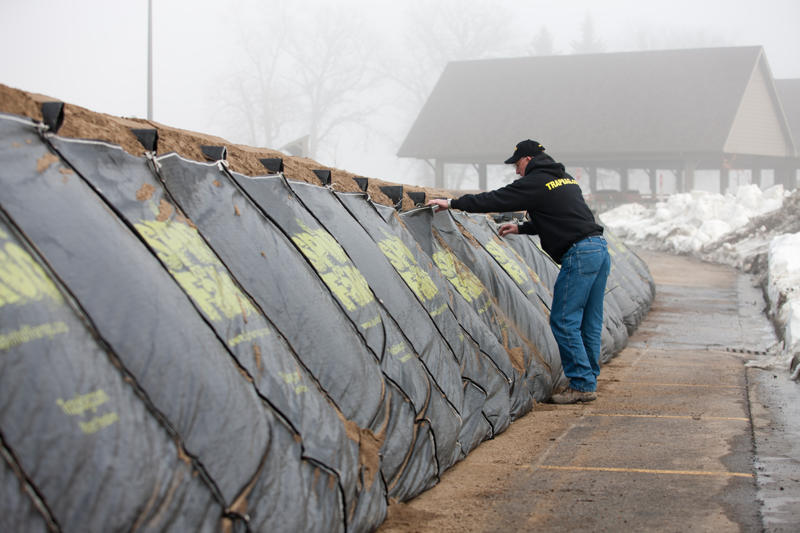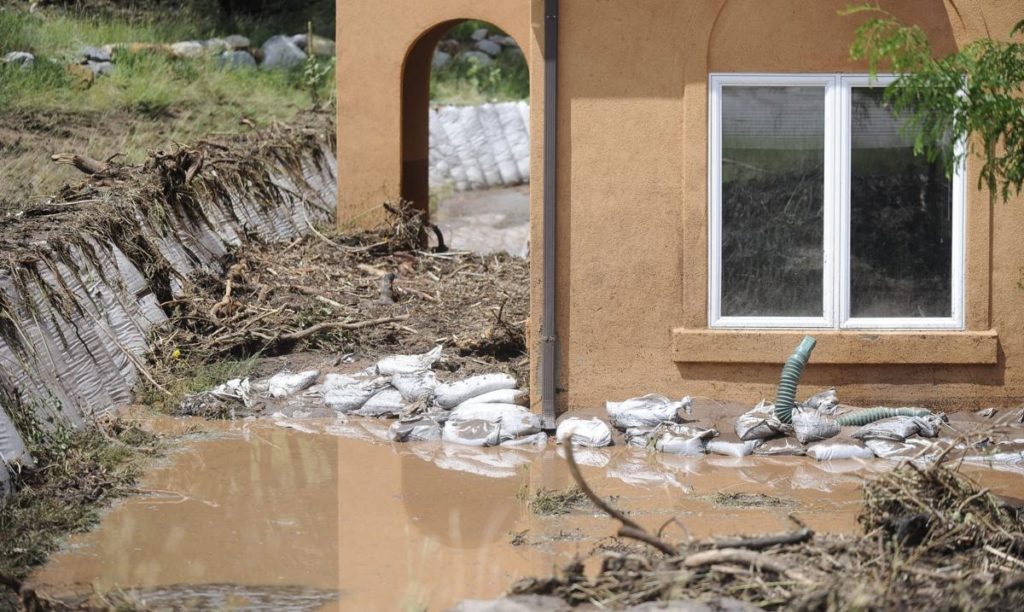Civil Engineering & Climate Change: How TrapBag® Can Help
Climate change impacts the work of civil engineers by weakening infrastructure. Read this blog to see how TrapBags are the superior solution to protecting against erosion and flooding.

The Impact of Climate Change on Civil Engineering
The responsibility of civil engineers is to design and maintain roads, bridges, and other forms of infrastructure that can withstand severe weather events and natural disasters. The accelerating effects of climate change complicate this responsibility. As inclement weather events worsen in frequency and intensity, crucial infrastructure principles are required to be modified and protected. TrapBag barriers can be used to strengthen structures, even in the midst of continued climate change.
Using TrapBags for Civil Engineering Projects
TrapBags® are incredibly durable, versatile, cost-effective, rapid-deploy barriers that can aid civil engineers in their construction or city planning projects by providing the following:
- Infrastructure protection: Upholding costly infrastructure is hugely important. In order to stay productive, connected, and safe, our bustling society depends on many means of public transport, clean water supplies, and designated, contained waste management areas. TrapBags can provide added security to weakened infrastructure, saving time, money, and disruption to daily life.
- Water construction: There are a plethora of situations that require construction around or in water; the erection of dams, seawalls, and stormwater containment basics can be made more simple with TrapBag barriers.
- Erosion control: Both events of flooding and excessive mudslides lead to disastrous erosion, diminishing stable land and affecting nearby infrastructure. As a rapid-deploy solution, TrapBags offer temporary or permanent protection.
Advantages of Using TrapBag
TrapBags can provide protection from natural disasters while easing some effort civil engineers put into project planning and cost estimation, as they are:
- More efficient than traditional sandbags: TrapBags require 40% less fill than a typical sandbag wall, making them more cost effective and significantly lighter.
- Easier and quicker to set up: Due to the interlaced accordion style of TrapBags, they are able to be rapidly placed in position and subsequently filled with sand, washed gravel, or concrete, cutting down on installation time.
- A great temporary or permanent solution: As a result of their high-strength textile exterior, TrapBag barriers can be used temporarily while a more situational, longevity-appropriate solution is devised. Because they are constructed in a way that maintains the integrity of the entire row, even if one individual cell is compromised, TrapBags are also reliable forms of permanent protection.
Protecting Infrastructure from Natural Disasters
The amount of natural disasters is increasing and impacting areas that may not have been previously affected. TrapBag can be used to help protect complex infrastructure from the effects of various natural disasters, whether it be extreme flooding or erosion-inducing landslides.
TrapBags for Flood Protection
Record levels of flooding are occurring all over the country. TrapBags can be used when constructing flood control and prevention methods, such as:
- Dams: Deployed prior to a flooding event, TrapBags can be arranged and stacked in a dam formation (with water on both sides) to save the surrounding area (and expensive infrastructure) from submersion. TrapBags provide both temporary and permanent flood protection.
- Dikes: TrapBag dikes prevent water from exceeding a certain level in areas that would naturally be underwater if not for a barricade. As they run parallel to the water, this solution is great for protecting roadways or areas of land in ongoing construction in the event of a natural disaster.
- Levees: Similar to dikes, levees are barriers that keep water on one side from spilling over into a low-lying area. Many coastal cities have levees to protect from overflowing water due to hurricanes or storm surge flooding. TrapBags can create new levees or reinforce existing structures.
TrapBags for Landslide Protection
Landslides can be devastating to a community, causing billions of dollars in damages. In climate-change-affected areas, mudslides may become more common. TrapBag barrier solutions can be used to protect infrastructure from mudslides by creating retaining walls and diversion barriers.
When an earthquake or hurricane occurs, a landslide can certainly follow. A damage-preventing retaining wall can be installed on a steep slope to minimize soil movement, upholding the stability of the ground and surrounding buildings and structures like bridges, dams, and highways. While some opt for permanent concrete barriers, these can be expensive due to the material and labor intensive install. TrapBag mechanically stabilized walls (MSE walls) are a much more affordable, more quickly positioned solution when needing to prepare an area with little time.
A properly installed diversion barrier can direct the flow of a landslide into a safer, less-destructive path, protecting homes, property, and public infrastructure. Due to their durable accordion configuration, TrapBags hold tightly together to prevent a gap or leak.
Water Construction
TrapBags can be used in water-based construction projects to better protect water-surrounded builds and control storm surges. TrapBag cofferdam construction can be utilized to build bridges, piers, and pipelines by constructing an area where water needs to be contained and removed. A cofferdam can also be utilized to allow engineers to get a better understanding of what needs to be modified on an existing job.
With 88% of U.S. hurricane-related deaths resulting from water, it is safe to say climate change-induced hurricanes can wreak havoc on nearby communities. TrapBags can be constructed to create strong seawalls, withstanding the extreme wind and flood risks associated with these types of weather events.
In times of excess precipitation, TrapBags can also create stormwater containment basins, preventing both property and ecologically damaging runoff.
Prevent or Mitigate Erosion
Erosion is becoming an increasingly accelerating problem in the wake of climate change. When used for erosion control, TrapBags can prevent erosion and mitigate existing issues, such as:
- Riverbank stabilization: Climate change-induced flooding can cause the land around a riverbank to collapse, degrading property and creating issues for the infrastructure relying on it. To avoid these expensive and hazardous outcomes, TrapBags can be filled with cement and positioned to strengthen a riverbank.
- Dune stabilization: Increasingly powerful gusts of wind can be detrimental to sand dunes, which are vital, naturally-occuring forms of erosion control, as they provide a barrier between land and water. Inserting TrapBags at the core of the dune helps to maintain a strong base, protecting the sand under and around from heightened climate-change generated wind storms.
Plan Your Next Project Today with TrapBag
TrapBags are a worthwhile solution for any kind of civil engineering projects, especially those impacted by the effects of climate change. Send us a message to get TrapBags in preparation of your next project.


